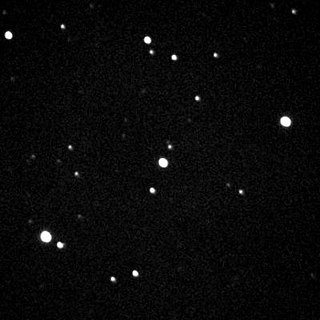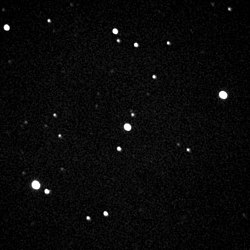Top Qs
Timeline
Chat
Perspective
WASP-1
Star in the constellation Andromeda From Wikipedia, the free encyclopedia
Remove ads
WASP-1 is a magnitude 12 binary star system located about 1,250 light-years away[2] in the Andromeda constellation.[7] The binary system consists of a metal-rich F-type main-sequence star, named WASP-1A, and a distant low-mass star, named WASP-1B. WASP-1A has one known transiting hot Jupiter exoplanet named WASP-1b.
Remove ads
Stellar companion
WASP-1A has a distant companion star, named WASP-1B. WASP-1B is a low-mass star that is around 0.3 times as massive as the Sun and has an effective temperature of about 3400 K.[6]: 24 WASP-1B is located northward of WASP-1A at an angular separation of about 4.6 arcseconds, corresponding to a projected distance of 1587 AU.[6]: 13, 15 WASP-1B was first identified in observations from 2006 and confirmed in further observations from 2012 to 2014, which showed that it shares the proper motion of WASP-1A, indicating the two stars are gravitationally bound to each other.[6]: 15
Remove ads
Planetary system
In 2006, an extrasolar planet was discovered by the Wide Angle Search for Planets team using the transit method.[4] The planet has a density of 0.31 to 0.40 g/cm3, making it about half as dense as Saturn, and one third as dense as water. The orbit of WASP-1b is inclined to the rotational axis of the star by 79.0+4.3
−4.5 degrees, making it a nearly "polar" orbit.[8]
Two searches for additional planets using transit-timing variations have yielded negative results.[9][10]
Remove ads
See also
References
External links
Wikiwand - on
Seamless Wikipedia browsing. On steroids.
Remove ads

